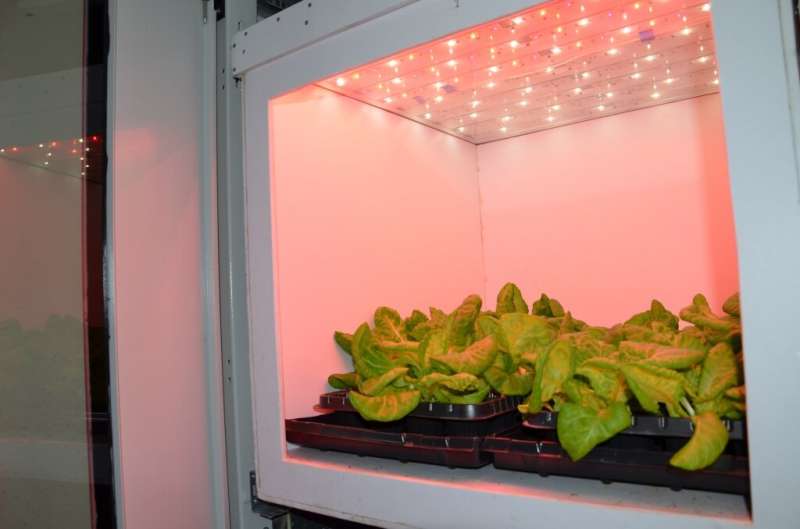Researchers create the conditions for growing plants in the Arctic

Researchers at the TSU Siberian Botanical Garden (SibBG), the Institute of High Current Electronics SB RAS (IHCE), and Tomsk Polytechnic University have implemented an interdisciplinary project to study the optimal parameters of UV radiation for pre-seed treatment and photosynthetically active radiation for growing economically valuable plants. The proposed approach will permit growing different crops under artificial lighting conditions, including in closed life support systems and critical farming areas, including the Arctic.
"We have tested the irradiation device created by TPU scientists. It controls the spectral composition and intensity of illumination in manual and automatic modes," says Tatyana Astafurova, head of the Laboratory of Plant Physiology and Biotechnology at SibBG. "Our task was to assess the degree of impact of the new device on the life processes of plants and the selection of the most effective light modes, taking into account the species, varietal, and age characteristics of plants."
As Tatyana Astafurova notes, the use of different parts of the spectrum of optical radiation gives the opportunity to influence not only the structural and functional characteristics of plants, but also to regulate their yield, prolong shelf life, change metabolism, and improve nutritional properties. For example, in medicinal plants, it is possible to increase the content of biologically active substances to obtain microgreen with desired properties.
"This approach enables growing environmentally friendly strong plants without harmful chemical effects in conditions of limited lighting," - says Tatyana Astafurova. "Plant photoregulation is promising for areas with difficult climatic conditions and lack of arable land (vertical farming). It can be used in closed-cycle plants. However, this method will be effective only in the presence of high-tech radiation sources, so many countries are now actively working on creating them. We need to have new generation light sources—energy efficient, safe, and cost-effective. Interdisciplinary projects like ours help to get closer to this goal and provide the new features with the right features."
The second block of the project was implemented jointly with the IHCE SB RAS. Scientists practiced a new way of preseed treatment and removing them from the state of rest. UV irradiation from excilamps developed by the institute staff was used as a tool. In this case, the dose dependence was selected individually for different crops, including for hard-seed and difficult-to-grow ones.
During the tests, it was possible to obtain new data on the effect of UV irradiation on the sowing qualities of seeds of plants with a long shelf life and low germination (wheat, camelina, tributary, clover, and others) and to improve this indicator.
"There are various ways to lead seeds out from dormancy, including mechanical, chemical, physical, and others," says Tatyana Astafurova. "With the researchers of IHCE SB RAS, we tried to find a more environmentally friendly and effective approach. In the long run, the obtained results can be the basis of a new technology for treating seeds to improve their germination and increase the yield of various crops."
Provided by Tomsk State University




















